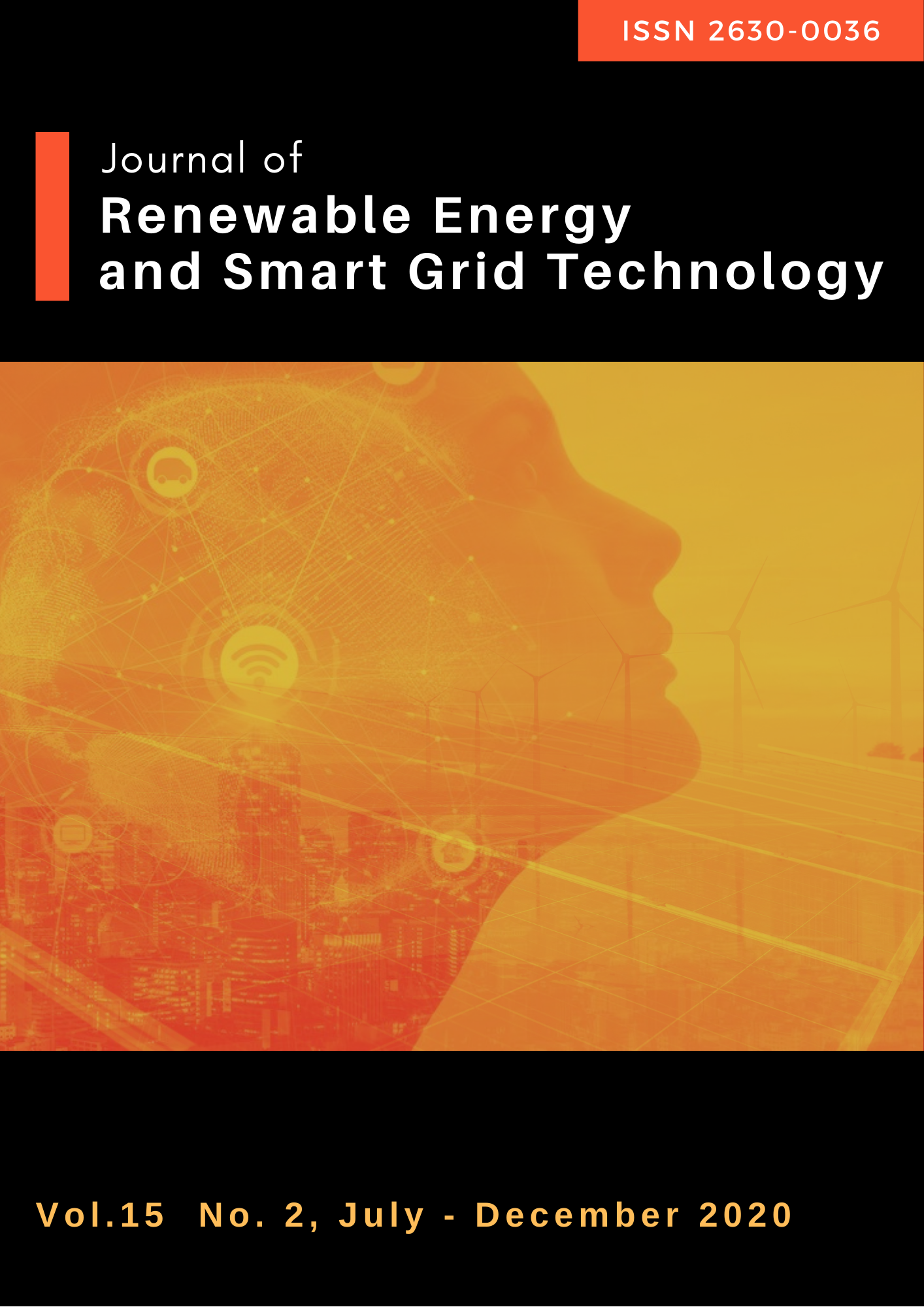The Exergetic Performance Evaluation of the Quintuple Effect Evaporator in Raw Sugar Production Processes
Keywords:
Quintuple Effect Evaporator, Exergetic Efficiency, Raw Sugar Production, ExergyAbstract
The aim of this paper was evaluation the exergetic performance of quintuple effect evaporators units in raw sugar production processes. The energy analysis in the raw sugar production process has been using basic thermodynamic principles to evaluate the performance of the quintuple effect evaporator. However, the energy principle is not enough to find out resource utilization. This study showed the exergy and advance thermodynamics analysis to evaluate quintuple effect evaporator performance for use in the improvement of the energy efficiency of system. The research was on actual processing conditions. The raw sugar production process was evaluated using key indicators to measure the effectiveness, exergy losses, exergetic efficiency of each evaporator and overall effects. The results from analysis by exergy showed that the highest exergy loss was at the first evaporator with 23,100.04 kW, 49 % of exergy input. Whereas the third evaporator had the highest exergetic efficiency with 92.40 %. Furthermore, there is moderate exergy loss at the fourth evaporator. Other effects of exergy destruction of the quintuple effect evaporator were identified. The analysis results can be used for improving energy saving, design, equipment operation and overall sugarcane production process.
References
Energy Policy and Planning Office (EPPO). (2015). Power Development Plan. Bangkok, Ministry of energy.
Pandey, S. D., & Nema, V. (2011). An experimental investigation of exergy loss reduction in corrugate plate heat exchanger. Energy, 36, 2997 - 3001.
Erdal, G., Esengun, K., Erdal, H., & Gunduz, O. (2007). Energy used and economical analysis of sugar beet production. Energy, 32, 35 – 41.
Uysal, A. The Tomato paste sector. Tomato pastes exporters’ and producers’ association. Retrieved January 12, 2018, from https://www.siid.org.tr/Documents/SalcaSektoru.pdf.
Kaushik, S. C., Siva Reddy, V., & Tyagi., S. K. (2011). Energy and exergy analyses of thermal power plant: A review. Renewable and Sustainable Energy, 5(4), 1857 – 1872.
Wall, G. (1977). Exergy a useful concept within resource accounting (research report). Göteborg, Chalmers University of Technology and University of Göteborg.
Benja, A., Tsatsaronis, G., & Moran., M. (1996) Thermal design and optimization. New York, Wiley & Sons.
Kotas., T. J. (1995). The exergy method of thermal plant analysis Melbourne Krieger. Malabar, Krieger Publishing Company.
Resen., M. A. (2002). Can exergy help us understand and address environmental concern. Exergy an environmental journal, 2(4), 214 – 217.
Ayres., R. U. (1998). Eco – thermodynamics and economic and the second law. Ecological Economics, 26(2), 189 – 209.
OECD/FAO. (2016). OECD-FAO Agricultural Outlook 2016–2025. Paris, OECD Publishing.
Suwattiga, S. (2014). Strategic development sugarcane within next 10 years of Thailand. Bangkok, Office of sugarcane, SME Development Bank.
Chuasuwan, C. (2018). Sugar Industry. Bangkok, Krungsri Research. Retrieved April 12, 2018, from https://www.krungsri.com/bank/getmedia/64a1559a-2938-4f48-b5af-c601e52f660c/IO_Sugar_2018_EN.aspx
Saar Energy Center. (2013). Study on Cogeneration Opportunities in Sugar and Paper Industries in SAARC Member States. Islamabad, Saar Energy Center.
Rein, P. (2017). Cane sugar engineering (2nd edition). Berlin, Bartens.
Baloh, T., & Wittwer, E. (1995). Energy manual for sugar factories (2nd edition). Berlin, Bartens.
Florcruz, N. A. (2011, August 16-19). Sugar cane boiling house operation manual (2nd edition). 58th Philsutech National Annual Convention, Cebu, Philippines.
Cengel, Y. A., & Boles., M. (2011). Thermodynamics an engineering approach (7th edition). New York, McGraw-Hill.
Gundersen, T. (2009). An introduction to the concept of exergy and energy quality. Trondheim, Norwegian University of Science and Technology.
Bejan, A. (2016). Advanced Engineering Thermodynamics (4th version). New York, John Willey & Son, Inc.
Bapat, S. M., Majali, V. S., & Ravindranath, G. (2016). Exergy and sustainability of quintuple effect evaporation unit in a sugar industry – a case study. International Journal of Renewable Energy Technology , 7(1), 53 – 54.
Yilmaz, M., Sara, O. N., & Karsli., S. (2001). Performance evaluation criteria for heat exchangers base on second law analysis. Exergy, 1(4), 278 – 294.
Soares, O. D. D., Martins da Cruz, A., Costa Pereira, G., Soares, I. M. R. T., & Reis, A. J. P. S. (1997). Innovation and Technology Strategies and Policies. Dordrecht, Springer Nature.
Downloads
Published
How to Cite
Issue
Section
License
All copyrights of the above manuscript, including rights to publish in any media, are transferred to the SGtech.
The authors retain the following rights;
1. All proprietary rights other than copyright.
2. Re-use of all or part of the above manuscript in their work.
3. Reproduction of the above manuscript for author’s personal use or for company/institution use provided that
(a) prior permission of SGtech is obtained,
(b) the source and SGtech copyright notice are indicated, and
(c) the copies are not offered for sale.









